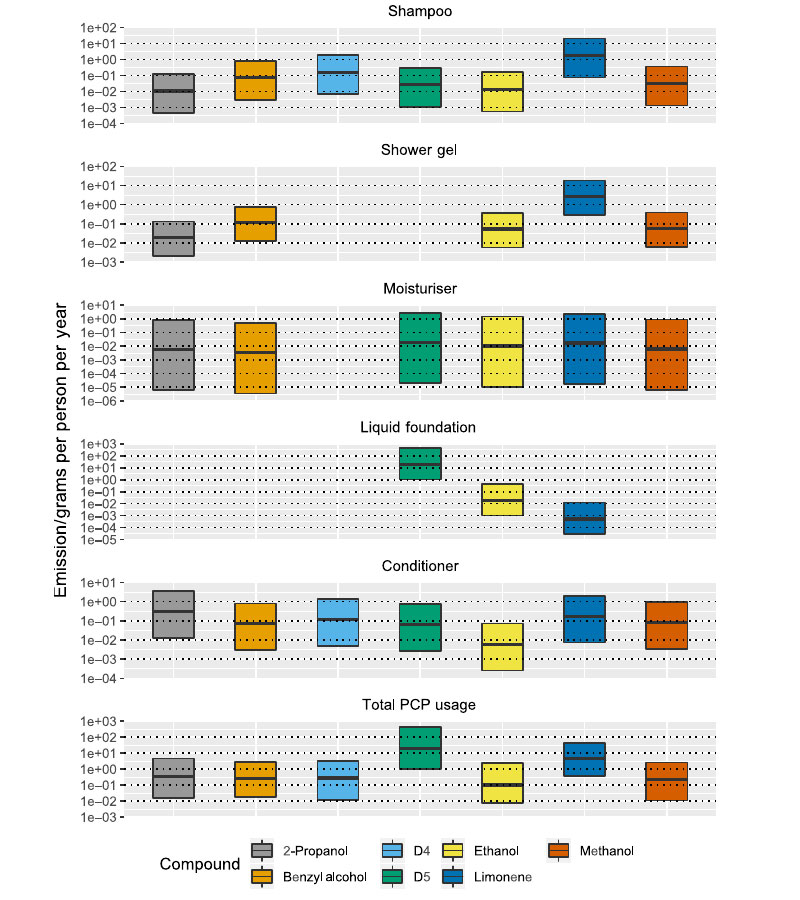
Shower gel, shampoo and chemical fumes: how everyday products affect air quality
Peel back the lid on a tin of paint and you are immediately hit by the strong scent released by the chemicals inside.
The distinctive smell is partly caused by chemicals known as volatile organic compounds (VOCs). They are used to keep products in a liquid form, but they also release harmful gases into the air.
Paint isn’t the only source of these chemicals in our homes, many products we use on a day-to-day basis also contain VOCs.
Health and beauty products, including shower gels, shampoos and liquid foundation, all contain VOCs. In fact, a surprising amount of this type of air pollution is released in your home.
Most VOCs are safe to breathe in low concentrations, although they can have serious implications for our health if concentrations build up in poorly ventilated spaces – which explains why we are advised to open the windows when painting indoors.
The short-term effects of very high concentrations of VOCs include dizziness, headaches and lung irritation. Over a longer timeframe, exposure can damage the nervous system, liver, kidneys and lead to some types of cancer. If released outside, they can also create air pollutants like small particulate matter and smog.
Scientists and policymakers are starting to question how much pollution is coming from frequently used consumer products like shower gel and shampoo, and how much contribution they make to our air quality.
“A lot of attention has been paid to reducing the emissions of VOCs from industries such as fossil fuels, road transport and industry. Over the last twenty years VOC emissions from vehicles have fallen very significantly, meaning that domestic sources now represent a much larger fraction of overall emissions.”
Professor Ally Lewis, Director of Science at the National Centre for Atmospheric Science
Every product releases a different set of VOCs into the air, leaving behind a kind of chemical fingerprint.
Professor Ally Lewis, Director of Science at the National Centre for Atmospheric Science, is part of a team at the University of York who tested thirty-six health and beauty products available from British retailers, creating a profile of the gases released by each one.
They combined the chemical profiles with typical patterns of use for each product, enabling the team to estimate the yearly emissions by each product, for a typical person.
The diagram estimates emissions profile for five types of health and beauty product. These are shampoo, shower gel, moisturiser, liquid foundation and conditioner.

The seven coloured boxes each represent a different chemical compound.
The height of the coloured box corresponds to the scale on the left-hand side, and estimates how many grams of VOC one person is likely to emit over the course of a year by using each product.
The results show that chemical emissions vary considerably between products. The emissions can range from a few milligrams to a few grams of each chemical, per product, per person each year.
Shower gels and liquid foundation were found to have the highest rates of VOC emission.
Professor Lewis says it is becoming more and more important to quantify the emissions from these household products.
Predicting chemical emissions from consumer products is a vital step in managing indoor air quality. But it also affects outdoor air quality when chemical fumes are released by windows or extractor fans.
In June, the Department for Environment, Food and Rural Affairs published a report outlining the role of VOCs in UK air quality. Until now, there has been very little information available on a product by product basis.
“Our new research provides a method to quantify emissions from everyday items and activities, something that will then support manufacturers, potentially to reformulate their products to reduce the air quality impacts” says Professor Lewis.
